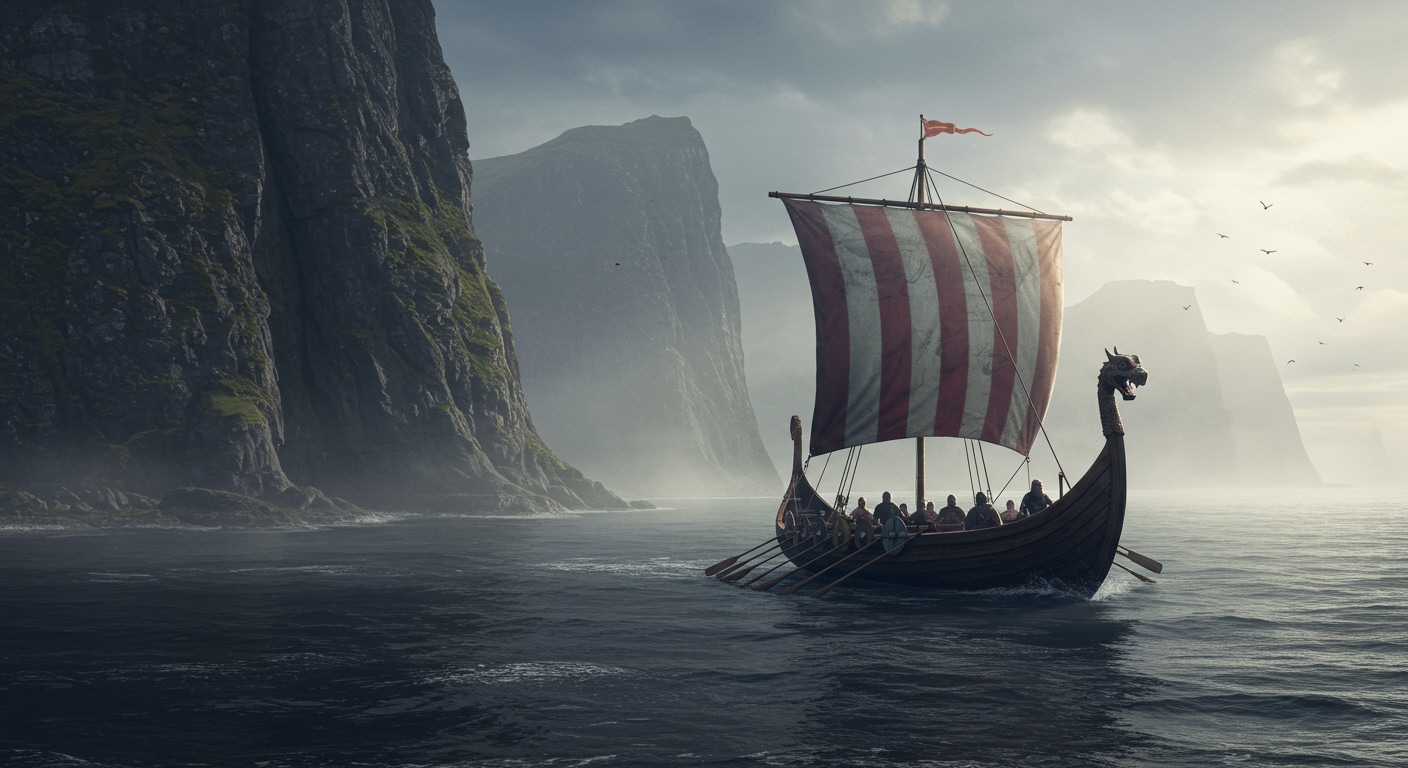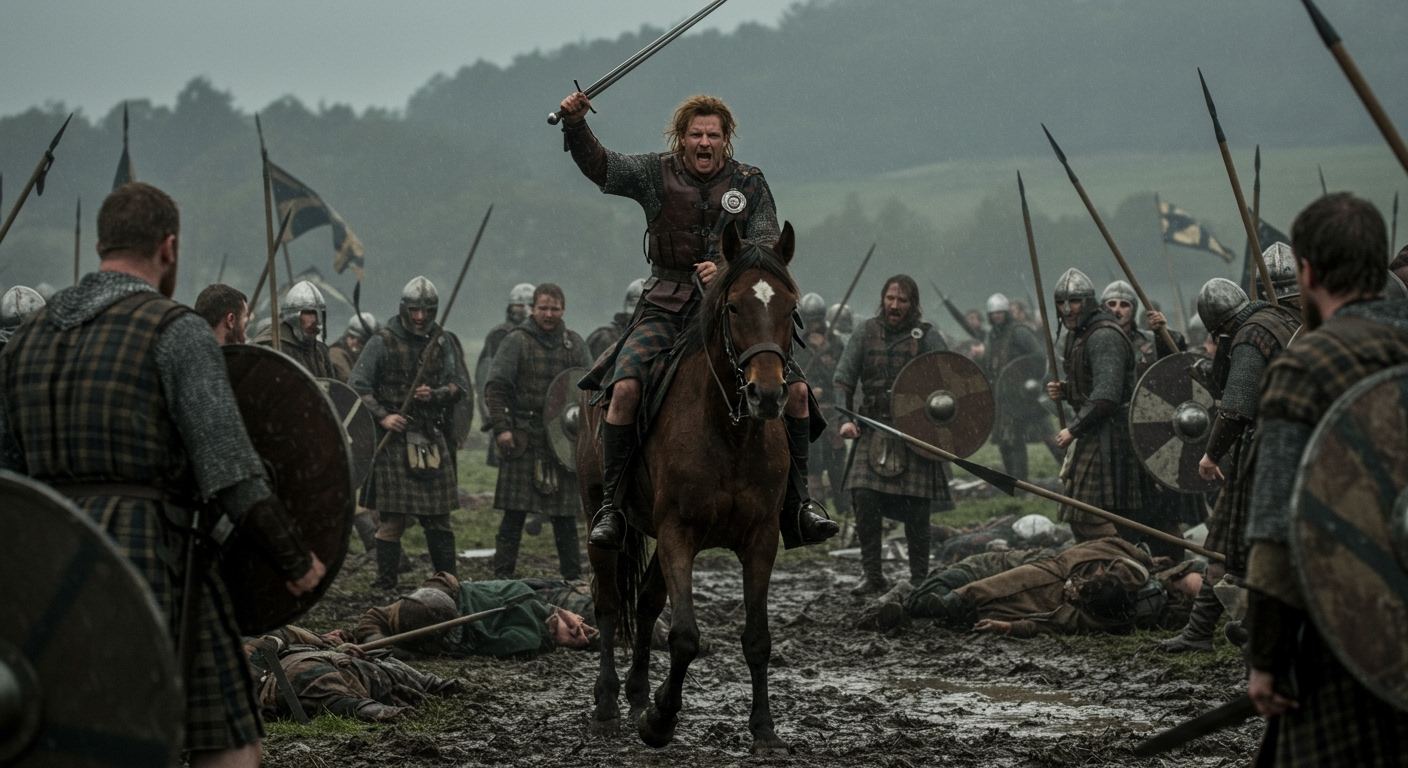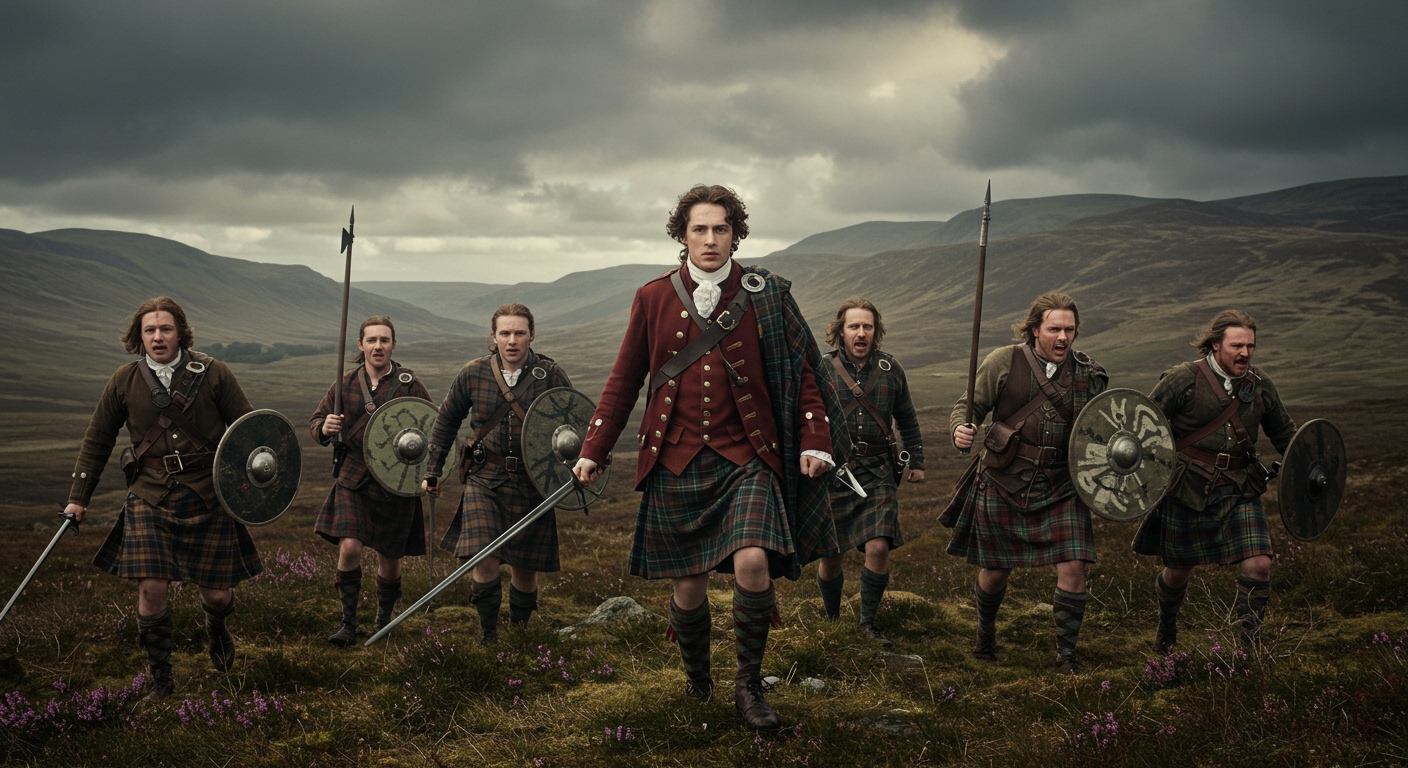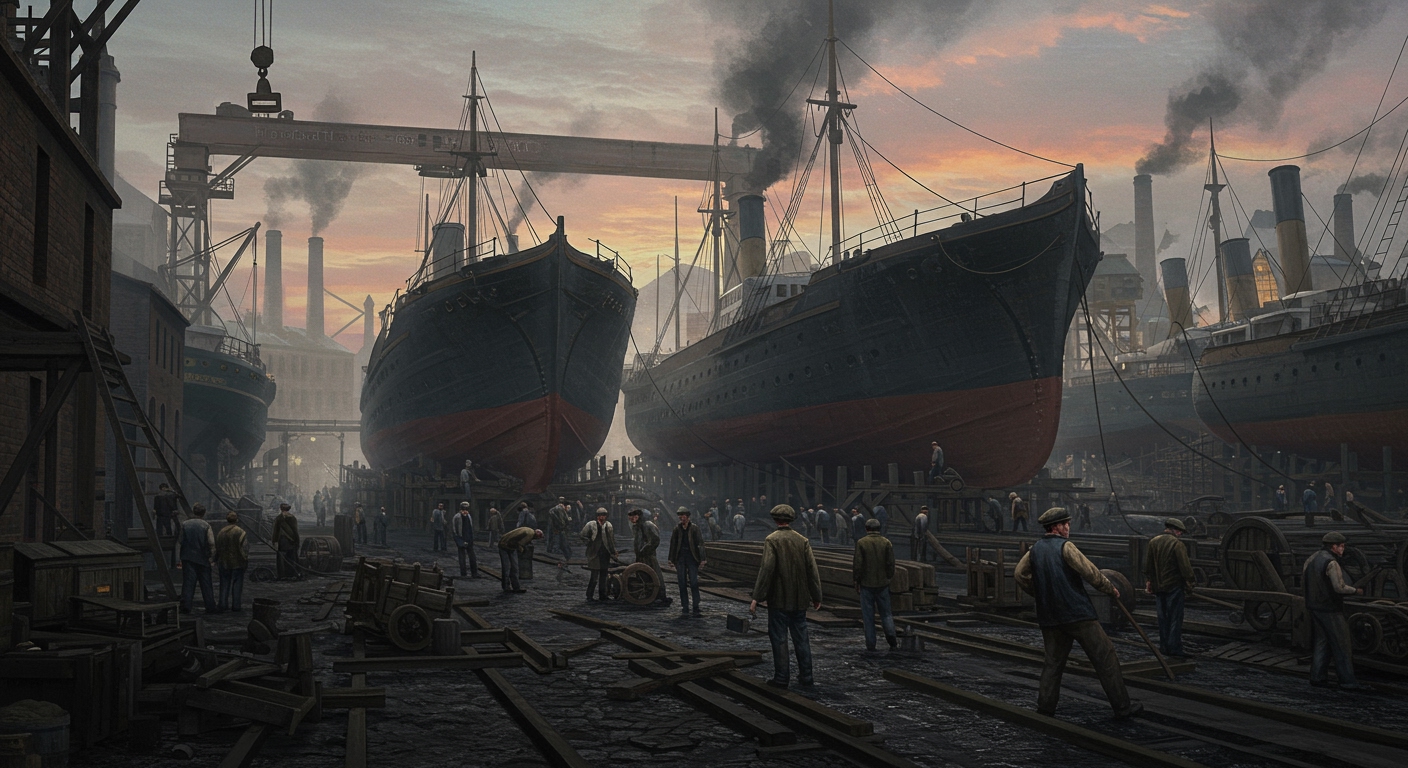I. Introduction: Journey Through Time in Scotland
The misty, rugged landscapes of Scotland aren’t just beautiful; they hold tales millennia old, etched into stone and whispered through glens. If you’ve ever wondered about the origins of this captivating nation, its fierce independence, and its profound cultural heritage, you’re in the right place. This guide offers a comprehensive yet accessible full timeline of Scottish history, from its prehistoric roots to its significant contributions to the modern world. Perfect for those seeking a brief history of Scotland for beginners, we’ll embark on a fascinating journey to understand the ancient history of Scotland explained in detail.
II. Prehistoric Scotland: The Dawn of Civilization (Before 80 AD)
A. Earliest Inhabitants (c. 8500 BC onwards)
Long before recorded history, Scotland was inhabited by resourceful people. The earliest evidence points to Mesolithic hunter-gatherers, with archaeological finds at sites like Cramond and Oronsay revealing their way of life. Around 4000 BC, the Neolithic Revolution arrived, transforming Scottish society. This period saw the introduction of farming, permanent settlements, and monumental stone structures. Key sites include the remarkably preserved village of Skara Brae in Orkney, the mystical standing stones of Callanish on Lewis, and the impressive chambered cairn of Maeshowe [1].

The subsequent Bronze Age (c. 2500 – 800 BC) brought metalworking, the construction of intricate burial cairns, and the emergence of more complex social structures. This transitioned into the Iron Age (c. 800 BC – AD 80), characterized by formidable defensive structures like hillforts, mysterious brochs (tall, circular drystone towers), and crannogs (artificial islands), alongside the emergence of distinct tribal groups across the land [4].
III. Roman Influence & the Rise of Kingdoms (AD 80 – 843)
A. Roman Forays (AD 80 – 410)
The arrival of the Roman Empire dramatically impacted the southern parts of what would become Scotland. General Agricola led early campaigns, famously clashing with the Caledonians at the Battle of Mons Graupius in AD 83. However, Rome’s ambition in Caledonia (their name for Scotland) was largely frustrated. The frontiers of their empire were marked by two great walls: Hadrian’s Wall to the south and the less enduring Antonine Wall further north. The Romans ultimately failed to conquer the fierce northern tribes, the Caledonians and later the Picts, who remained unconquered [5].
B. Post-Roman Scotland: The Age of Kingdoms
With the Romans gone by 410 AD, Scotland entered a dynamic period known as the Age of Kingdoms. Four main groups vied for influence:
- The Picts: These mysterious, powerful inhabitants of the north and east left behind incredible standing stones adorned with unique, enigmatic symbols. Their sophisticated society remains a subject of ongoing study.
- The Gaels (Scoti): Migrating from Ireland, they established the kingdom of Dál Riata in Argyll. They were instrumental in spreading the Gaelic language and, crucially, Christianity, largely through the efforts of St. Columba and his monastery on the island of Iona.
- The Britons: Descendants of the Romano-British, they formed the Kingdom of Strathclyde in the southwest.
- The Angles: Expanding from the Anglo-Saxon kingdom of Northumbria, they established a presence in the southeast, notably in what became Lothian.
Adding to this complex tapestry were the Viking Raids and Settlements from the late 8th century onwards. These Norse incursions brought disruption but also led to significant Viking settlement in the Isles, profoundly shaping the genetics and culture of areas like Orkney and Shetland.

IV. The Formation of Scotland: The Kingdom of Alba (843 – 1286)
A. Kenneth MacAlpin and the Unification (843 AD)
The traditional starting point for the unified Scottish nation is 843 AD, with the merging of the Picts and Gaels under Kenneth MacAlpin. This pivotal moment led to the formation of the Kingdom of Alba, a name that would define Scotland for centuries. Subsequent kings gradually expanded their control, consolidating power and pushing back against external threats.
B. Early Medieval Scotland
During this period, Scotland saw the influence of feudalism and monasticism, with the Scottish church becoming increasingly organized and powerful. A distinct Scottish identity began to solidify, reinforced by a shared language (Gaelic, later Scots), legal systems, and a growing sense of nationhood. However, this era was also marked by early, often violent, wars with England over borders and sovereignty, foreshadowing centuries of conflict.
V. The Wars of Scottish Independence (1286 – 1371)
A. The Succession Crisis and English Interference
The death of Margaret, the Maid of Norway, in 1290, without a clear heir, plunged Scotland into a deep succession crisis known as the ‘Great Cause’. This power vacuum provided a pretext for Edward I of England, often dubbed the ‘Hammer of the Scots’, to assert his overlordship, sparking a brutal and defining struggle for Scottish sovereignty [2].
B. Key Figures and Battles
The Wars of Scottish Independence produced legendary heroes. William Wallace emerged as a leader of the common people, achieving a stunning victory at the Battle of Stirling Bridge (1297), though he was later captured and executed. His legacy, however, inspired the nation.

The mantle of leadership then passed to Robert the Bruce, who famously secured Scotland’s freedom at the decisive Battle of Bannockburn (1314) against a much larger English army. His assertion of Scottish nationhood was eloquently articulated in the Declaration of Arbroath (1320), a powerful plea for independence addressed to the Pope. Finally, the Treaty of Edinburgh-Northampton (1328) formally recognized Scotland’s independence and the restoration of its monarchy.
VI. The Stuart Dynasty and Union of Crowns (1371 – 1707)
A. The Rise of the Stuarts
Following the Wars of Independence, the Stuart Dynasty ascended the throne in 1371. Their long reign was characterized by internal struggles among powerful noble families and an ever-evolving, often tumultuous, relationship with England [3].
B. Reformation and Religious Strife
The 16th century brought the Reformation to Scotland. Led by figures like John Knox, the Scottish Reformation saw the establishment of Presbyterianism as the dominant form of Protestantism, fundamentally altering Scottish society and politics. The reign of Mary Queen of Scots was particularly tumultuous, marked by religious and political conflict, eventually leading to her deposition and execution.
C. Union of the Crowns (1603)
A pivotal moment occurred in 1603 when James VI of Scotland inherited the English throne, becoming James I of England. This ‘Union of the Crowns‘ meant that while the two nations now shared a monarch, their parliaments and legal systems remained separate for over a century.
D. Civil Wars and the Covenanters
The 17th century saw Scotland deeply embroiled in the British Civil Wars (part of the wider Wars of the Three Kingdoms). This period was defined by intense religious and political divisions, notably the struggle of the Covenanters, who fought to preserve Presbyterianism against royal interference.
VII. The Act of Union & Scottish Enlightenment (1707 – c. 1800)
A. The Act of Union (1707)
Despite centuries of fierce independence, economic hardship and political instability (including the disastrous Darien Scheme) ultimately led to the Act of Union in 1707. This landmark event saw the abolition of the Scottish Parliament and the creation of the Kingdom of Great Britain, uniting Scotland and England under a single parliament in Westminster.
B. Jacobite Rebellions
The Union was not universally accepted. A series of Jacobite Rebellions sought to restore the Stuart monarchy, most famously the ’15 (1715) and ’45 (1745) rebellions, the latter led by the charismatic Bonnie Prince Charlie. The dream of a Stuart restoration was finally crushed at the devastating Battle of Culloden (1746), which also led to harsh measures designed to suppress Highland culture and clan system.

C. The Scottish Enlightenment
Coinciding with the aftermath of the Union and the Jacobite defeat, Scotland experienced a remarkable period of intellectual and scientific brilliance: the Scottish Enlightenment. Edinburgh became a vibrant hub of ideas, producing towering figures whose contributions profoundly shaped Western thought. Key thinkers included philosopher David Hume, economist Adam Smith (author of The Wealth of Nations), inventor James Watt, and poet Robert Burns. Their work in philosophy, economics, science, and literature had a global impact, showcasing Scotland’s enduring intellectual prowess.
VIII. Industrial Revolution & Modern Scotland (c. 1800 – 1945)
A. Industrial Transformation
The 19th and early 20th centuries saw Scotland undergo a profound Industrial Transformation. Vast coalfields, iron and steel production, and the booming shipbuilding industry on the River Clyde transformed cities like Glasgow into global industrial powerhouses. Scotland became a major contributor to the British Empire’s economic and military might, though this also brought significant social challenges, including rapid urbanization and poor living conditions for many.

Conclusion: An Enduring Legacy
From the ancient stones of Skara Brae to the industrial might of Glasgow, Scotland’s history is a testament to resilience, innovation, and an unwavering sense of identity. This brief timeline only scratches the surface of a truly epic past, showcasing how diverse peoples and powerful forces shaped a nation that continues to captivate the world. Exploring the ancient history of Scotland explained through its complete timeline reveals a narrative rich with drama, intellect, and profound cultural depth. It’s a journey that continues to inspire and inform its vibrant modern identity.
References
- [1] scottishhistorydigest.org
- [2] beginnersguide.scotlandshistory.com
- [3] chroniclesofalba.org
- [4] archives.scot
- [5] timelineofscotland.academia.edu



